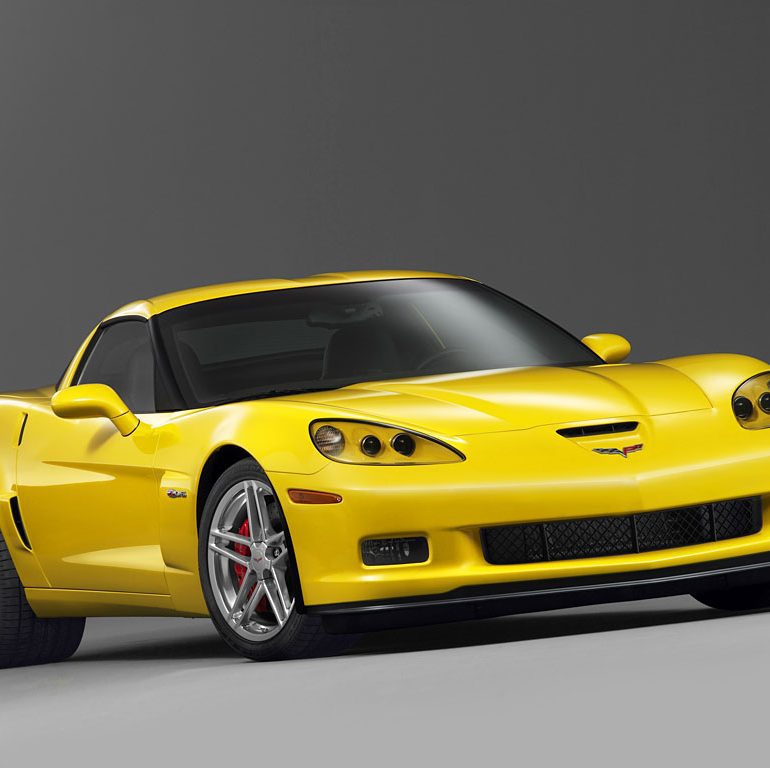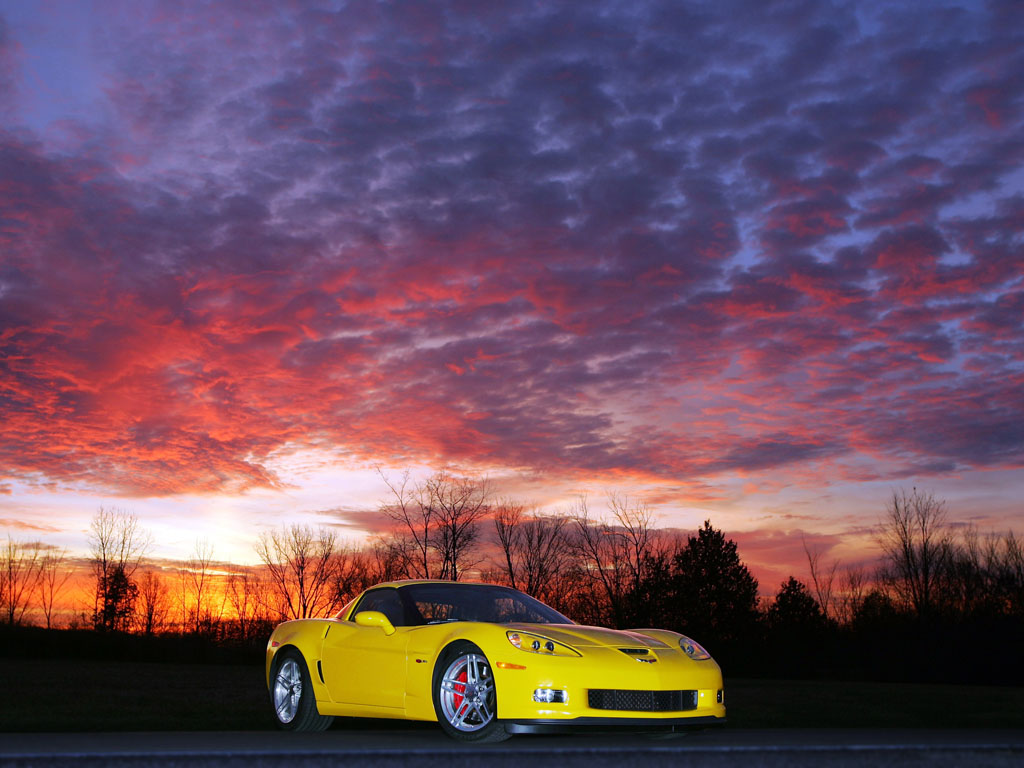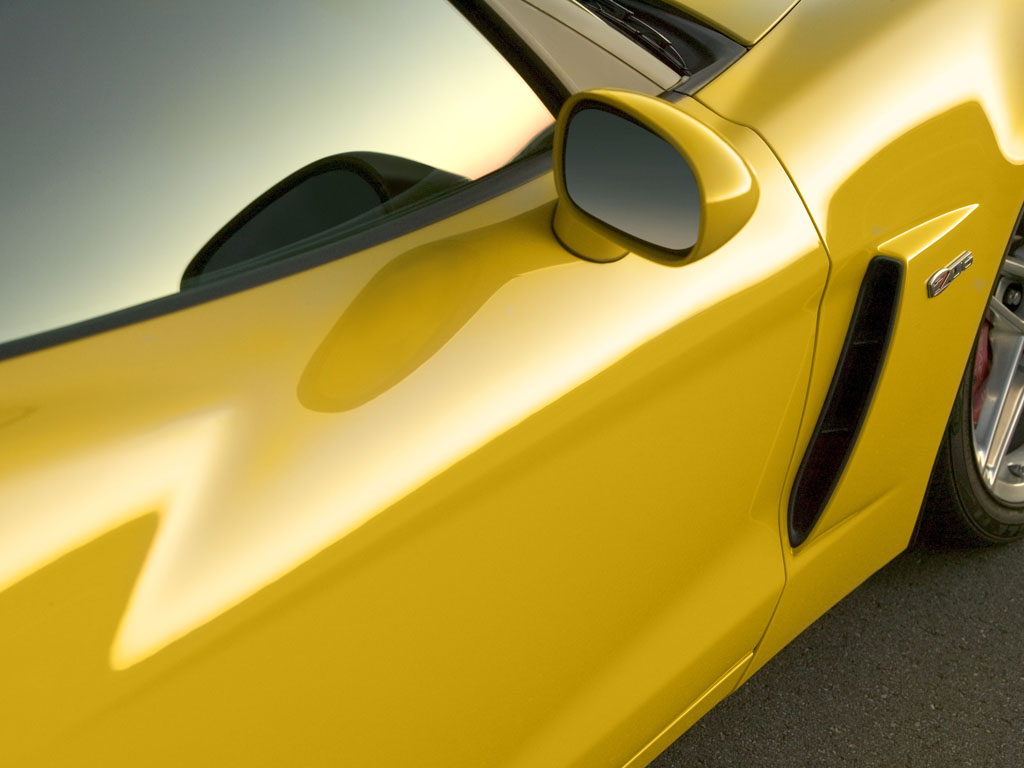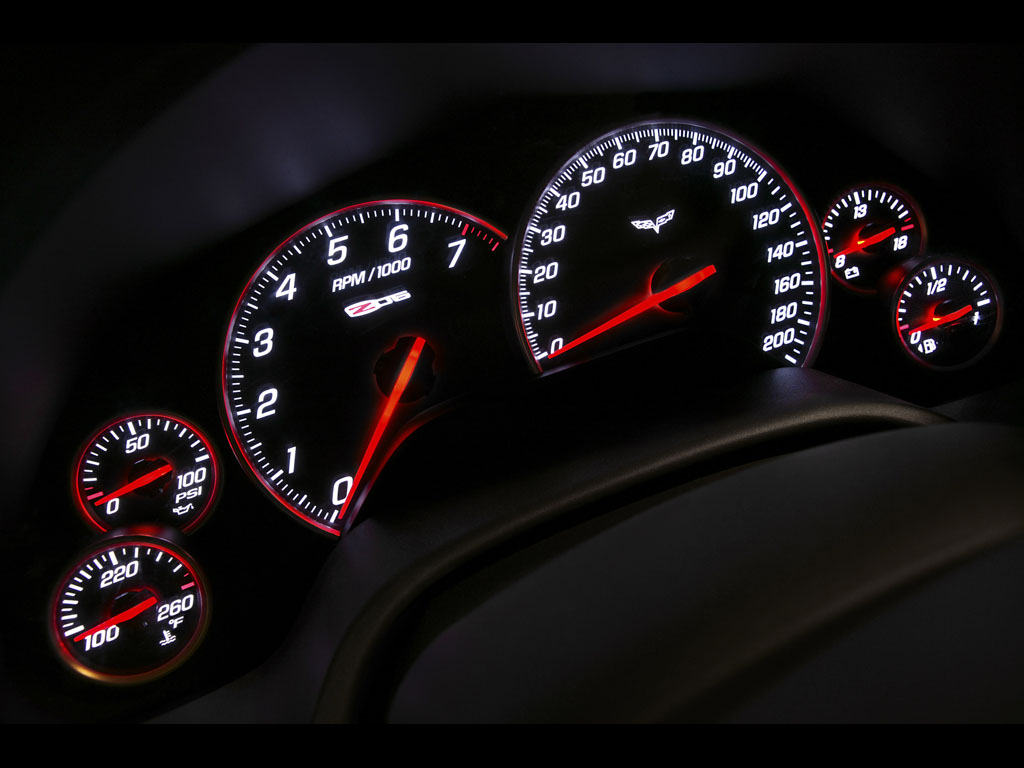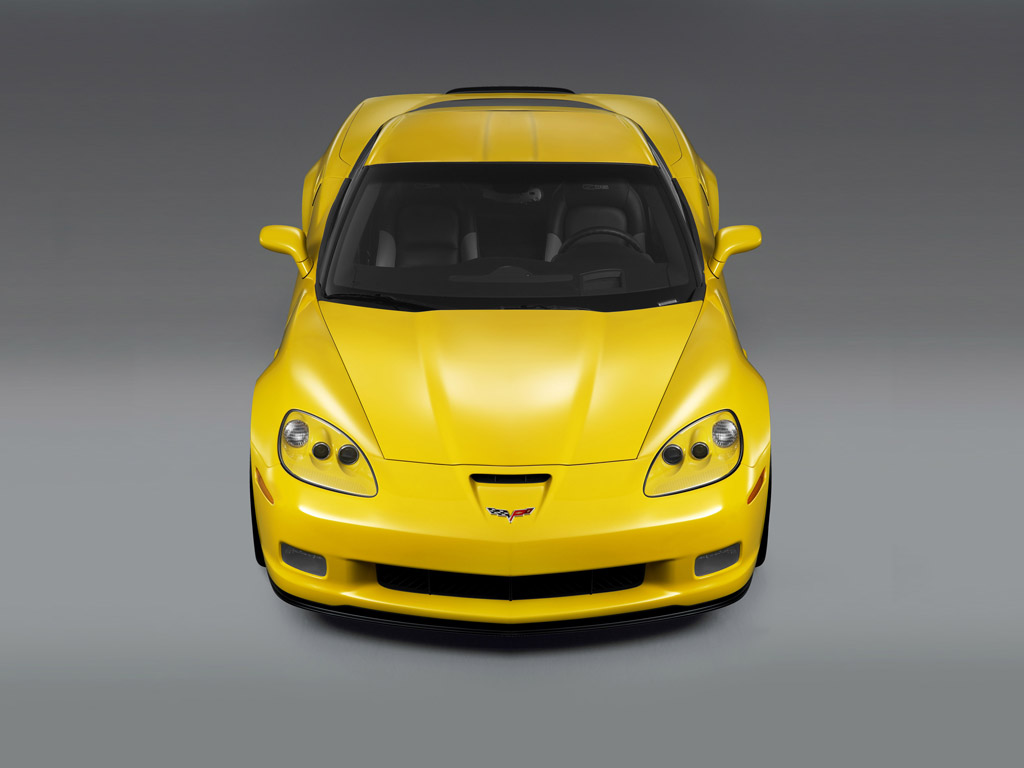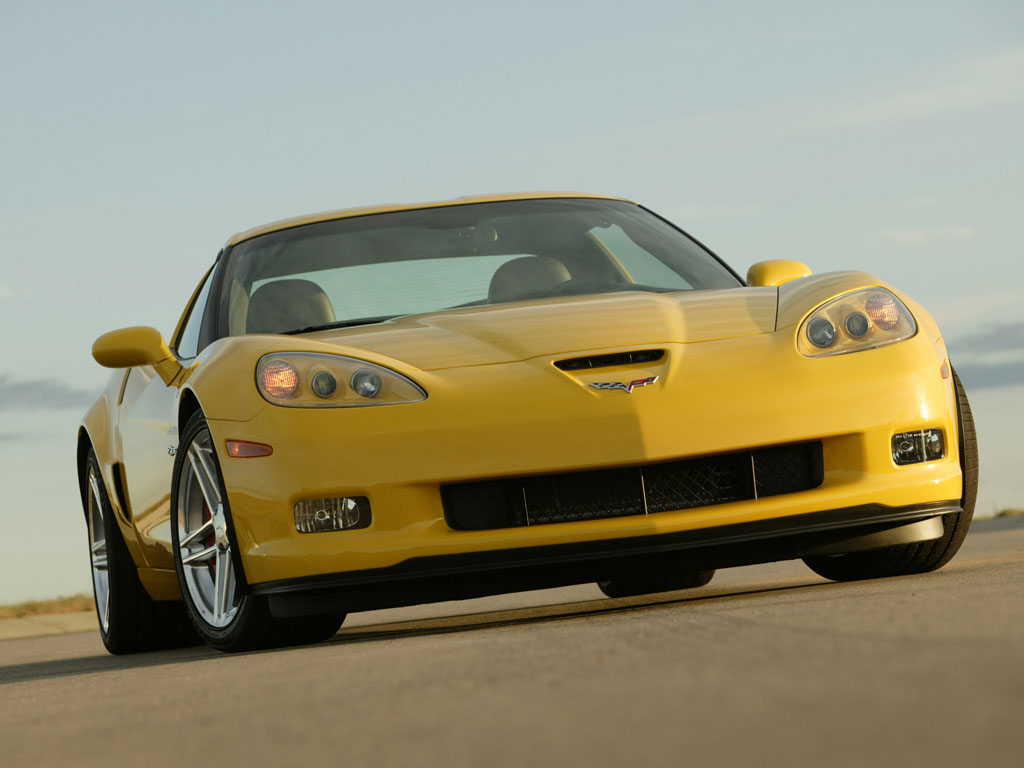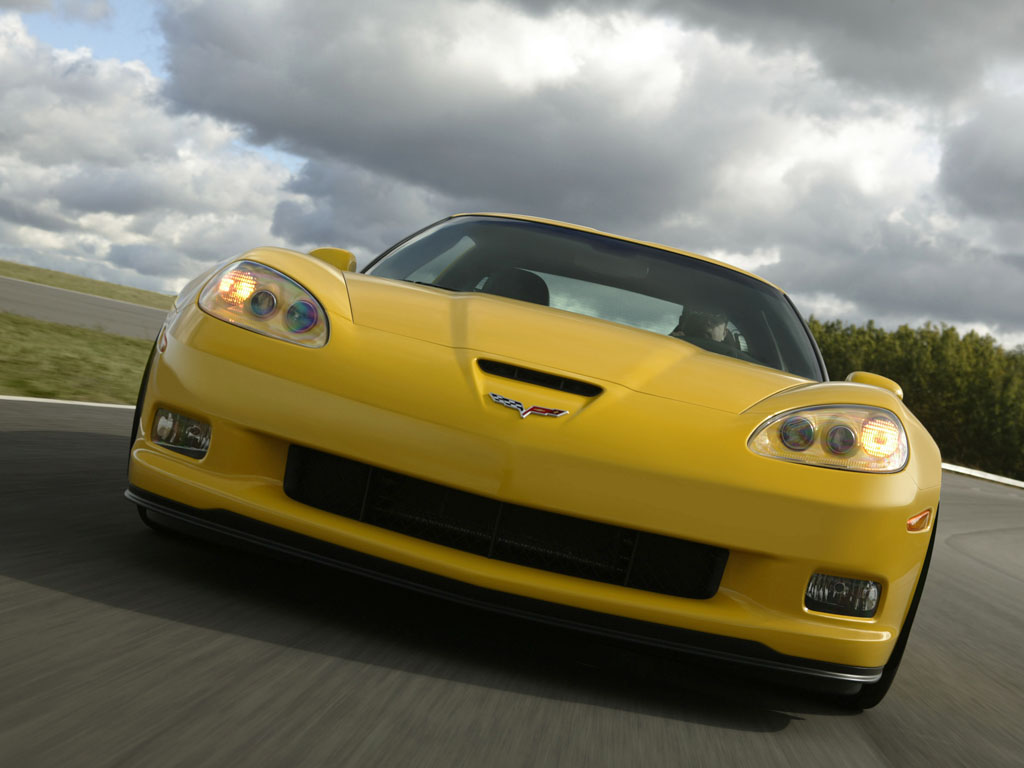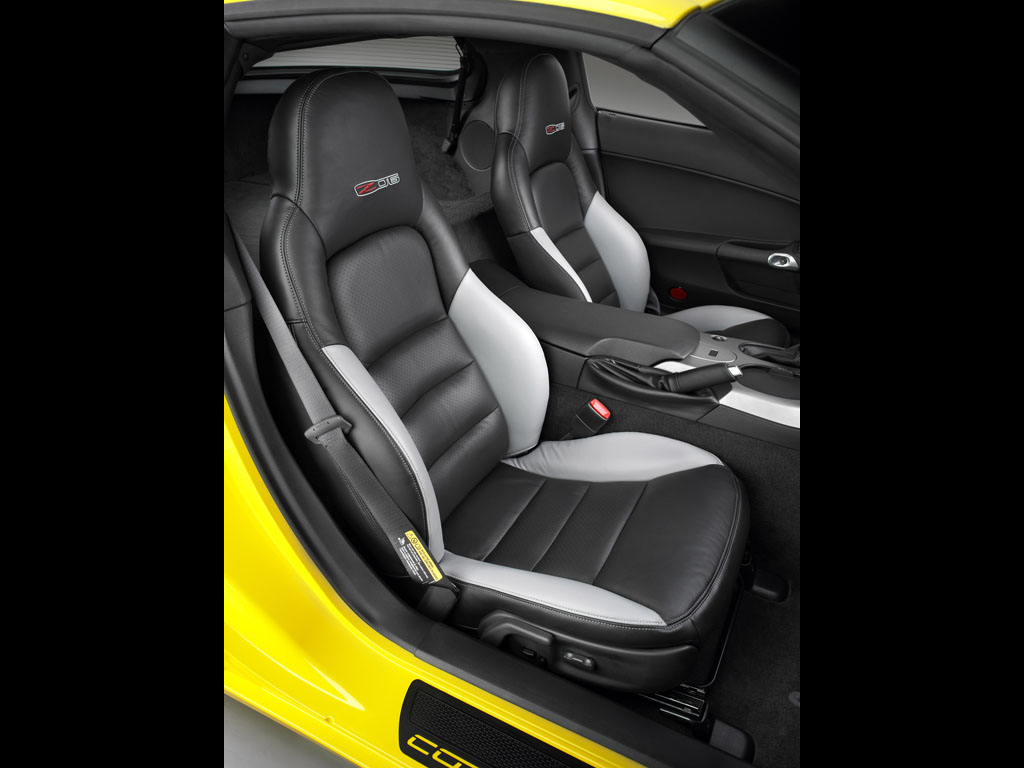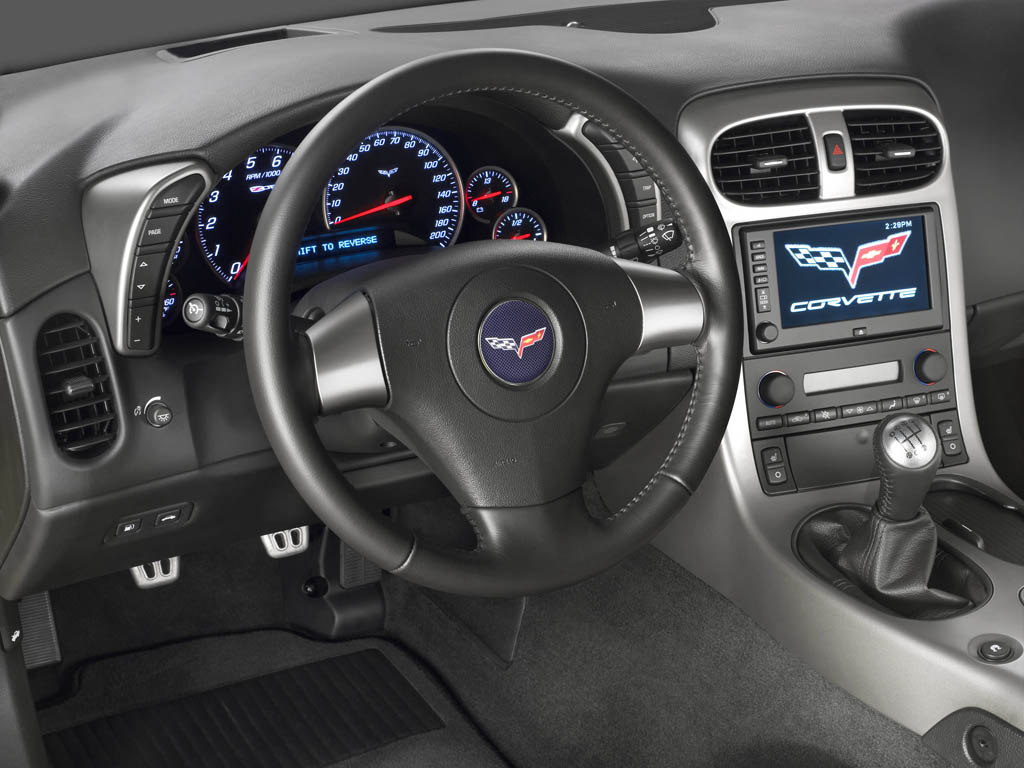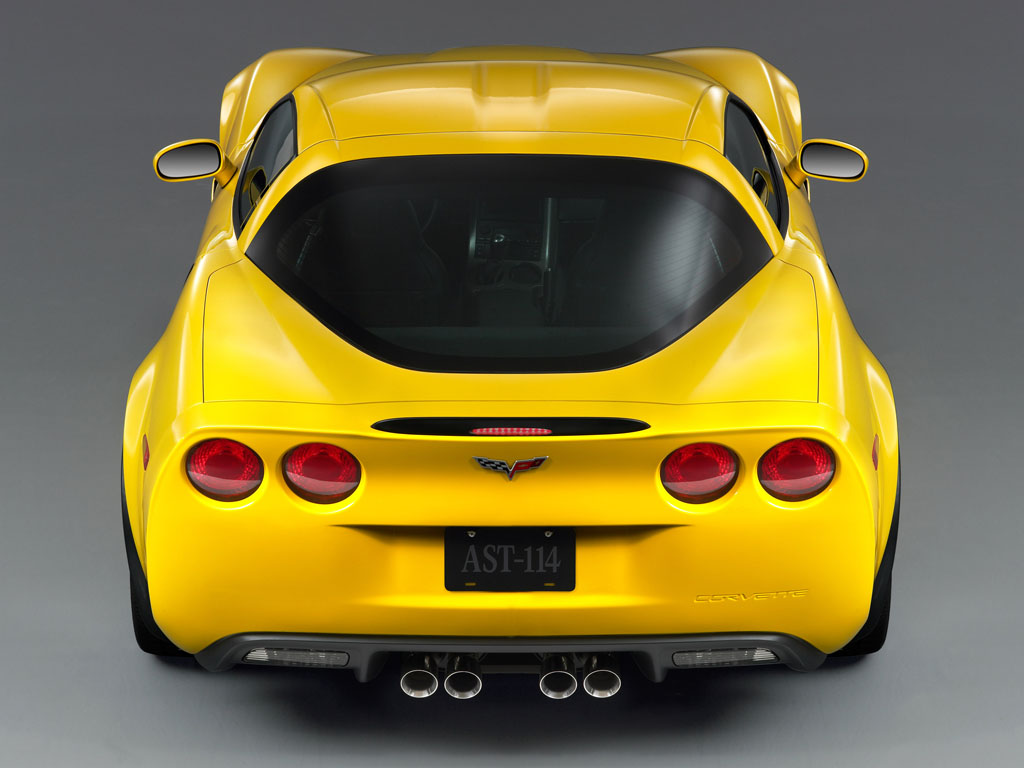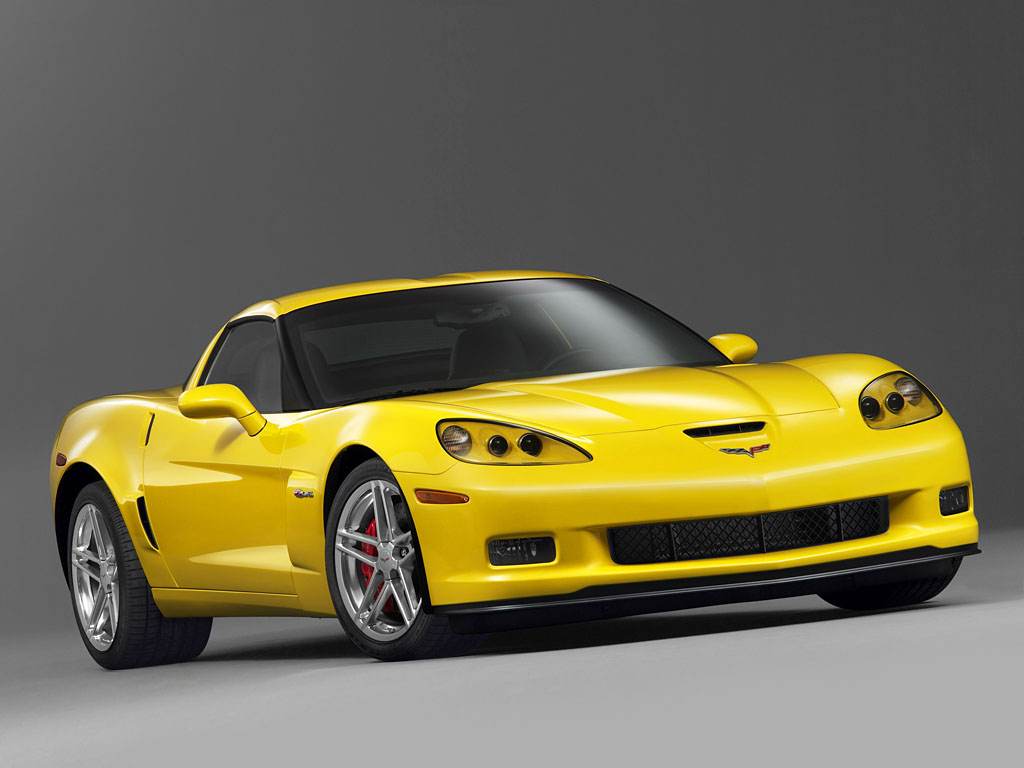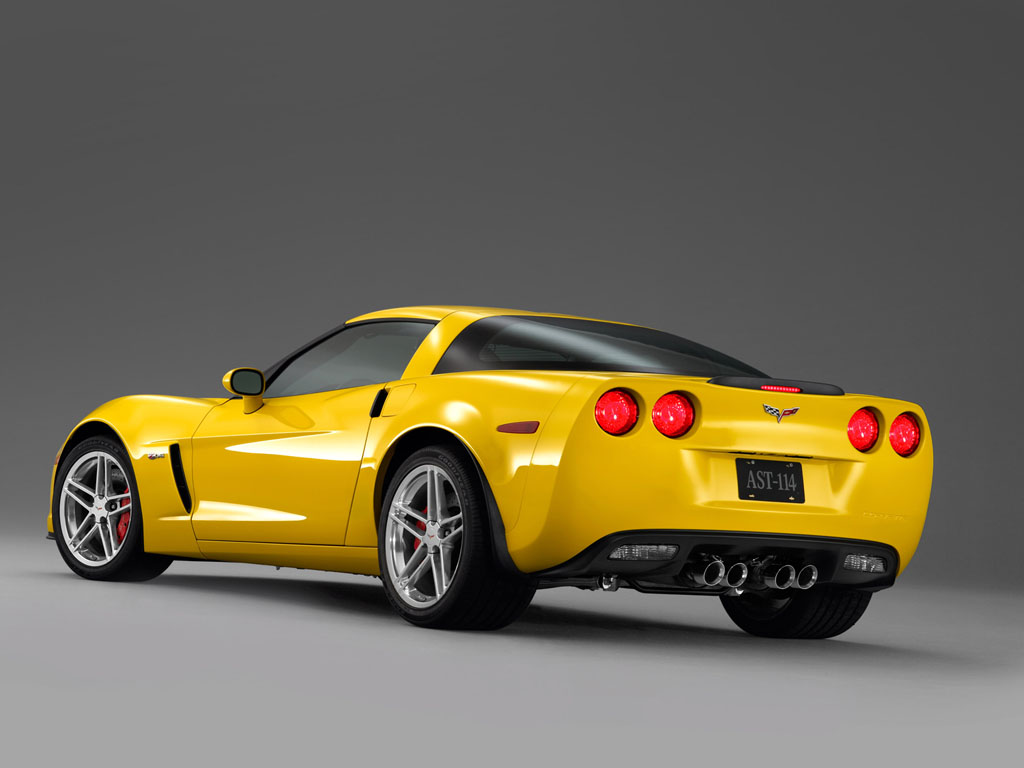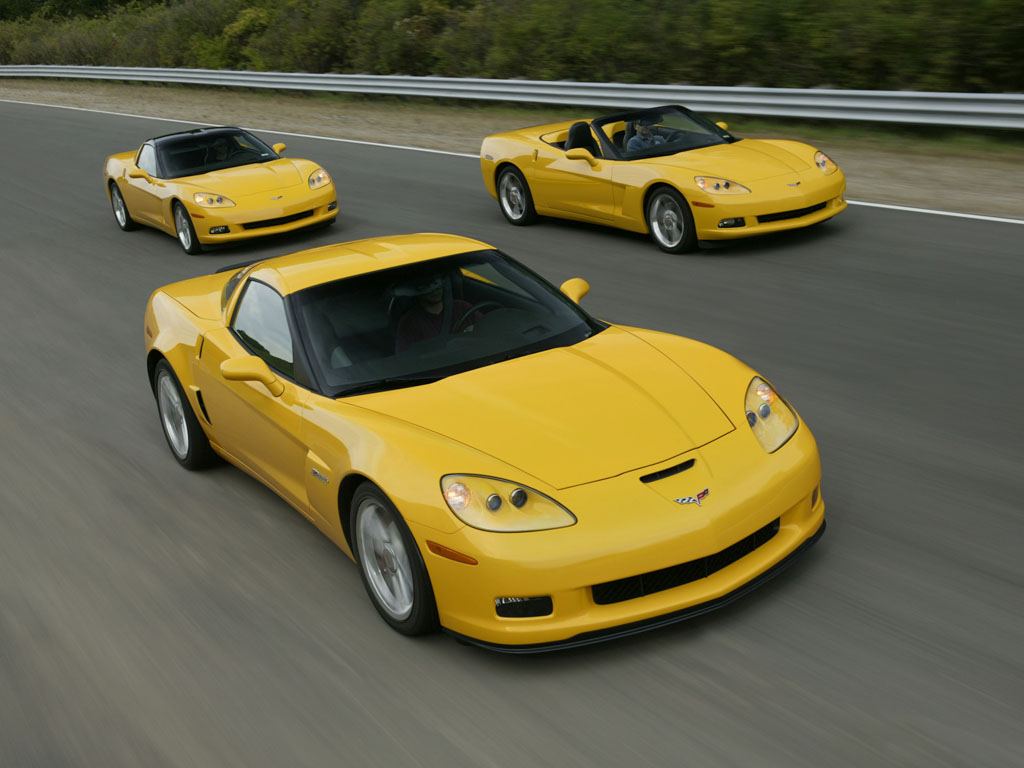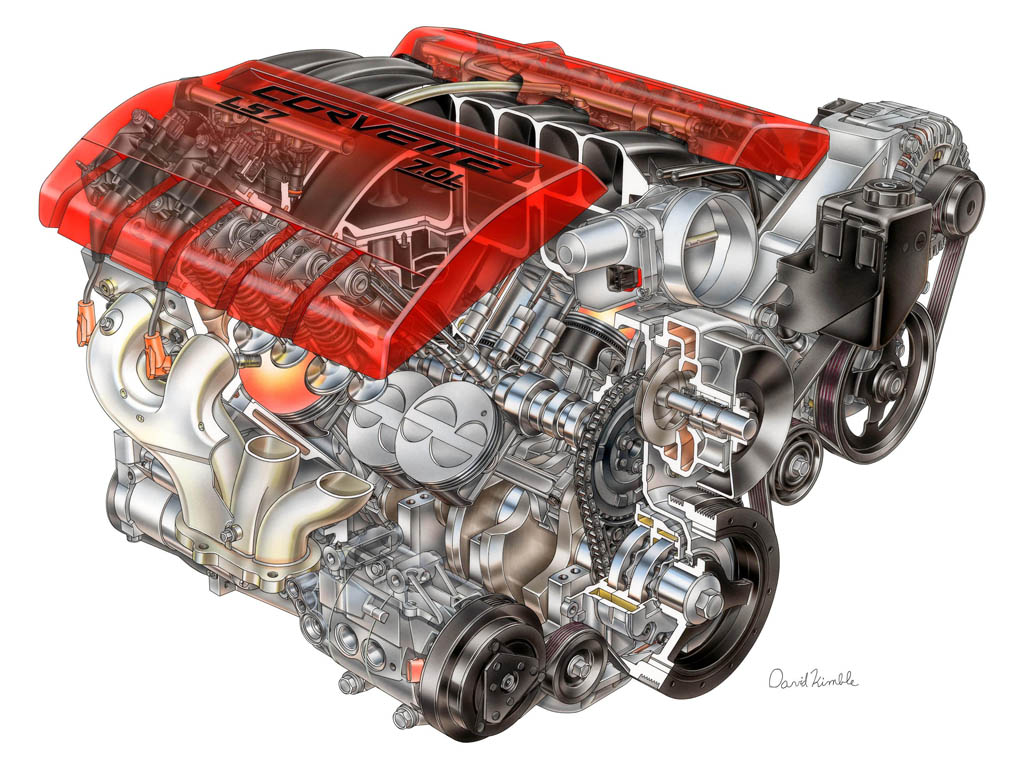2006→2010 Chevrolet Corvette Z06
Detroit, January 9 – By winning every race in the 2004 season, the Corvette C5-R racing team wrapped up the most successful era in Corvette’s 50-year racing history. In its five years, the C5-R racing program took 35 victories in 55 races, four American Le Mans Series championships and three double victories at the 24 Hours of LeMans.
The Z06 sparked the second half of the C5’s life span with a Corvette model for the extreme performance enthusiast. Now, Team Corvette combines the numerous attributes of the sixth-generation Corvette with the technology and winning determination from the C5-R program to take the new Z06 to the next level.
Chevrolet introduced the 2006 Corvette Z06 at the North American International Auto Show. It is the fastest car ever offered by Chevrolet and General Motors. It is comprised of an unprecedented level of capability and technology, making it one of the greatest performance vehicles on the market. With 500 horsepower and 475 lb.-ft. of torque, it also is the most powerful passenger car engine ever produced by Chevrolet and GM.
A new 427 engine
The all-new LS7 of the Z06 reintroduces the 427-cubic-inch engine to the Corvette lineup. Unlike the previous 427 engine, which was a big-block design, the new 7.0-liter LS7 is a small-block V-8 – the largest-displacement small-block ever produced by GM and a tribute to its 50 years as a performance icon. The LS7 is easily identified under the hood by red engine covers with black lettering.
The LS7 shares the same basic Gen IV V-8 architecture as the Corvette’s 6.0-liter LS2, but the LS7 uses a differen cylinder block casting with pressed-in steel cylinder liners to accommodate the engine’s wide, 104.8-mm-wide cylinder bores. And when compared to the LS2, the LS7 also has a different front cover, oil pan, exhaust manifolds and cylinder heads.
Internally, the LS7’s reciprocating components make use of racing-derived lightweight technology, including titanium connecting rods and intake valves, to help boost horsepower and rpm capability. The rpm fuel shut-off limit is 7000 rpm.
The LS7 has a dry-sump oiling system designed to keep the engine fully lubricated during the high cornering loads. An engine compartment-mounted 8-quart reservoir delivers oil at a constant pressure to a conventional-style oil pump pick-up at the bottom of the engine. The large-capacity reservoir, combined with a high efficiency air-to-oil cooler, provides necessary engine oil cooling under the demands of the engine’s power output. The 2006 Corvette Z06 is one of just a handful of production vehicles, and the only production Corvette, to ever incorporate such a high-performance oiling system.
Powertrain
The Corvette Z06’s powertrain systems are matched to the LS7’s performance capability. The light, four-into-one headers discharge in to new, close-coupled catalytic converters and through to new ‘bi-modal’ mufflers. The mufflers each feature a vacuum-actuated outlet valve, which controls exhaust noise during low-load operation but opens for maximum power.
At the rear of the LS7 engine, a single-mass flywheel and lightweight, high-capacity clutch channel torque to the rear transaxle. The six-speed manual transmission has been strengthened to handle the LS7’s increased torque load. The transmission includes a pump which sends transmission fluid to the front radiator for cooling. Upon its return, the fluid removes additional heat from the differential lube before returning to the transmission.
The M6 transmission connects to a limited-slip differential, with enlarged ring and pinion gears. Stronger axle half-shafts with tougher universal joints transmit power to the rear wheels.
Chassis
The Z06 has a unique aluminum body structure for optimum stiffness and light weight for the fixed-roof bodystyle. Perimeter rails are one-piece hydroformed members featuring cast suspension nodes, which replace many welded steel components on other Corvette models. Advanced structural composites featuring carbon fiber are bonded to the aluminum structure. The wider front wheelhouses, for example, are carbon composites and the passenger compartment floors combine carbon-fiber skins with an ultra-lightweight balsa wood core.
The 2006 Corvette Z06 has a new magnesium cradle that serves as the attachment point for the engine and some front suspension components. Magnesium is lighter than aluminum yet incredibly strong. The magnesium cradle helps improve the front-to-rear weight distribution, as do carbon-fiber front fenders and wheelhouses. ”This is an instance where the street car uses more advanced material than the racecar,â said Hill. ”We’re constrained by rules to run the steel frame in the racecars.”
The Z06 retains the 106-inch (2686-mm) wheelbase of other Corvette models, as well as the short-long arm suspension and transverse leaf spring design, but it rides on all-new wheels, tires, brakes, as well as its own rear spring and roll stabilizer.
The firmer suspension works harmoniously with large 18 x 9.5-inch cast-spun aluminum wheels and 275/35ZR18 tires in the front, and 19 x 12-inch cast-spun aluminum wheels with 325/30ZR19 tires in the rear – the largest wheel-and-tire combination ever offered on a Corvette.
Complementing the suspension system and large rolling stock is an equally capable four-wheel disc brake system, consisting of 14-inch (355-mm) vented and cross-drilled front rotors and 13.4-inch (340-mm) vented and cross-drilled rear rotors.
The front rotors are acted upon by huge, red-painted six-piston calipers that use six individual brake pads. Individual brake pads are used because they deliver more equalized wear compared to what would otherwise be a pair of very long single-piece pads. For the rear brakes, four-piston calipers with four individual brake pads are used. A Delphi four-channel ABS system is used, as is a very competent active handling system – complete with a Competitive Driving mode.
Styling
The new Z06 has an unmistakable and aggressive appearance, with design cues that include:
-A wide front fascia with a large, forward-facing grille opening, a splitter along the bottom and ‘Gurney lips’ along the sides to provide aerodynamic downforce
-A cold air scoop in front of the hood that integrates an air inlet system for the engine
-The trailing edge of the front wheel opening is radiused to achieve improved drag and a large air extractor is located behind the wheel
-A fixed-roof bodystyle optimizes body rigidity and aerodynamics
-Wider rear fenders with flares cover the massive rear tires and a brake cooling scoop in front of the wheels visually balances the fender extractor
-A tall rear spoiler houses the CHMSL on the top of the rear fascia
-10-spoke wheels
-Four larger stainless steel exhaust outlets
For all its race-inspired functionality, the Z06 is designed to be a daily drivable high-performance vehicle. To that end, comfort and convenience are held to a very high standard. HID lighting, fog lamps, leather seating, dual-zone air conditioning, cabin air filtration and Head-Up Display (HUD) with track mode and g-meter are standard.
The Z06 also has a revised gauge cluster that displays the Z06 logo on the 7000-redline tachometer and has a new readout on the oil pressure gauge to reflect the higher standard pressure of the dry-sump oiling system. And, like other 2006 Corvettes, the Z06 has a new, smaller-diameter three-spoke steering wheel that provides a more agile, performance-oriented feel. The seats feature two-tone leathering surfaces, with Z06-logo embroidery and contrasting stitching.
Production of the 2006 Corvette Z06 will begin in the second half of 2005 at the Bowling Green , Ky. , Assembly Plant.
2006 Chevrolet Corvette Z06 Gallery
See full 2006 Chevrolet Corvette Z06 Gallery
In Detail
| type | Series Production Car |
| production years | 2006 – 2010 |
| built at | Bowling Green, Kentucky, USA |
| price $ | $ 70,175 |
| engine | Cast Aluminum LS7 V8 w/Dry Sump Lubrication |
| position | Front Longitudinal |
| aspiration | Natural |
| block material | Aluminum |
| valvetrain | OHV, 2 Valves w/Cyl |
| fuel feed | Sequential Fuel Injection |
| displacement | 7011 cc / 427.8 in³ |
| bore | 104.8 mm / 4.13 in |
| stroke | 101.6 mm / 4.0 in |
| compression | 11.0:1 |
| power | 372.9 kw / 500 bhp @ 6200 rpm |
| specific output | 71.32 bhp per litre |
| bhp/weight | 352.11 bhp per tonne |
| torque | 644.01 nm / 475 ft lbs @ 4800 rpm |
| redline | 7000 |
| body / frame | Composite & Carbon Fiber Body Panels over Hydroformed Aluminum Frame w/Aluminum & Magnesium Structural Components |
| driven wheels | RWD w/Electronic Traction Control |
| wheel type | Forged Alloy |
| front tires | 275/35ZR18 Goodyear F1 Supercar |
| rear tires | 325/30ZR19 Goodyear F1 Supercar |
| front brakes | Vented & Cross Drilled Rotors w/6 Piston Calipers, ABS |
| rear brakes | Vented & Cross Drilled Rotors w/4 Piston Calipers, ABS |
| front wheels | F 45.72 x 24.13 cm / 18 x 9.5 in |
| rear wheels | R 48.3 x 30.5 cm / 19 x 12 in |
| steering | Rack & Pinion w/Speed Sensitive Power Assist |
| f suspension | Wishbones w/Upper & Lower Control Arms, Transverse Composite Leaf Spring, Monotube Shock Absorbers |
| r suspension | Wishbones w/Upper & Lower Control Arms, Transverse Composite Leaf Spring, Monotube Shock Absorbers |
| curb weight | 1420 kg / 3130 lbs |
| wheelbase | 2686 mm / 105.7 in |
| front track | 1612 mm / 63.5 in |
| rear track | 1587 mm / 62.5 in |
| length | 4435 mm / 174.6 in |
| width | 1930 mm / 76.0 in |
| height | 1246 mm / 49.1 in |
| transmission | Tremec M6 6-Speed Manual |
| gear ratios | 2.97:1, 2.07:1, 1.43:1, 1.00:1, 0.71:1, 0.57:1 |
| final drive | 3.42:1 |
| top speed | ~318.7 kph / 198 mph |
| 0 – 60 mph | ~3.6 seconds |
| 0 – 100 mph | ~8.3 seconds |
| 0 – 1/4 mile | ~12 seconds |
| fuel econ epa | 13 L/100 km or 17.5 mpg-us |


